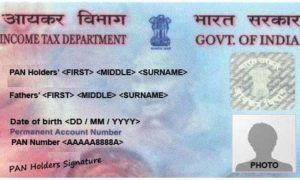The EPFO or the employee PF trust, will maintain two accounts for income tax purpose: One with contribution within the threshold and the other (second) for contribution over the threshold
The Employees’ Provident Fund Organisation (EPFO) earlier this month announced an interest rate of 8.1% on EPF or employee provident fund accumulations in members’ accounts for the 2021-22 fiscal, down from 8.5% in the previous year. The interest on EPF was fully tax free in the hands of provident fund contributors till changes were introduced in the Budget 2021, effective from 1st April, 2021. The interest accrued on EPF contribution beyond a particular threshold will be taxable.
Read more: Rs 1,000 minimum monthly pension for EPFO members inadequate, says Parliamentary panel
For the sake of calculation, separate accounts within the provident fund account shall be maintained starting 2021-2022 and all subsequent years for taxable contribution and non-taxable contribution made by a person, say tax experts. Or in other words, the provident fund office or the employee PF trust, will maintain two accounts for this purpose: One with contribution within the threshold and the other (second) for contribution over the threshold.
How new income tax rules on EPF interest will apply:
1) According to the new rules, any interest credited to provident fund account of an employee shall be tax free only for contribution up to 2.50 lakh every year and any interest on employee’s contribution over 2.50 lakh shall be taxed in the hands of the employee year after year. In case the employer does not contribute to the provident fund of the employee, then the threshold applicable will be ₹5 lakh of employee’s contribution, says tax expert Balwant Jain.
2) The ₹5 lakh limit covers around 93% of the people who are EPFO subscribers and they will continue to get assured tax-free interest, according to the interest rate announced by EPFO every year.
3) The employer contributes 12% of basic salary plus dearness allowance to EPF and deducts another 12% from the employee’s salary; 8.33% of the employer contribution goes to Employees Pension Scheme (EPS) which earns no interest.
Read more: EPF interest rate at 8.10% is lowest in decades, know what FM Nirmala Sitharaman said
4) “Please note it is the interest on excess contribution which will become taxable and not the contribution itself. The excess contribution cannot be taxed as the contribution is made by the employee from his salary which already gets taxed,” Mr Jain added.
5) As far as balance standing to the credit of an employee as on 31st March 2021 is concerned, interest on this non-taxable account will continue to remain tax free.
6) It is interest on the second account (taxable) which will be taxed every year.
7) For the second account (taxable), it is not only for the year of contribution but also for all the subsequent years that the interest will become taxable, says Mr Jain.

































